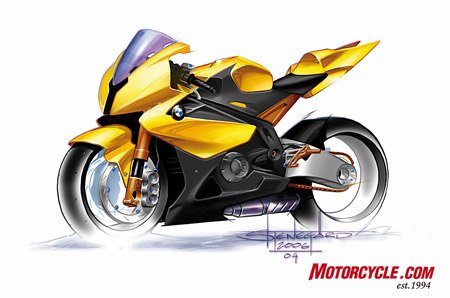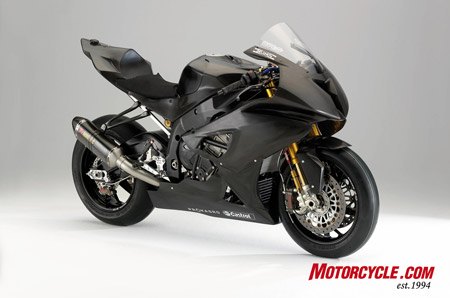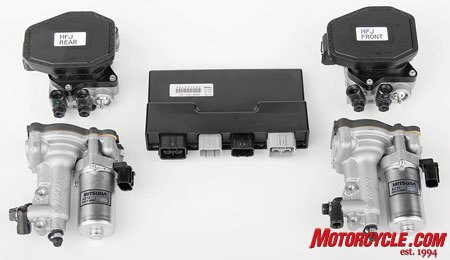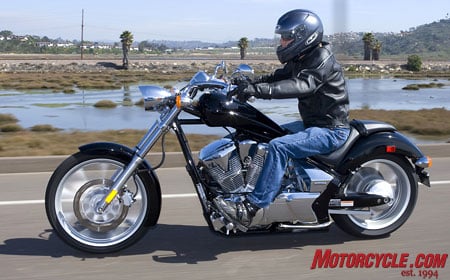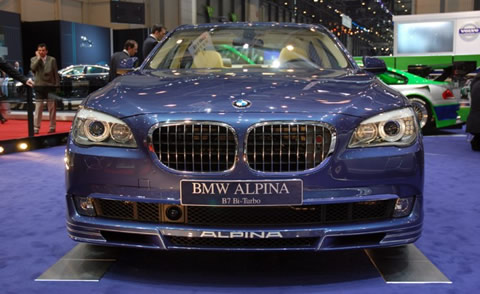
The old red Volkswagen Golf GTI screams to a halt. Before we know what's happening, its young driver leaps out and is firing questions in a broad southern German accent. We're pretty sure it went something like this: "How much? When? What engine?" It was all we could do to stop the guy from jumping into the empty seat next to us.
Still, you can't blame him for getting a little excited. Right now, there is only one Volkswagen BlueSport in existence, and apart from its unveiling at the Detroit Auto Show in January, this is the only time it has been allowed in public.
Originally conceived as a one-off concept car, the compact mid-engine roadster has an internal development code name, raising hopes that it will go into production as a spiritual successor to the 914, the mid-engine roadster that VW developed and Porsche sold.
The BlueSport was developed in a back-to-basics approach, with an emphasis on simplicity and low weight. At its heart is a new mid-engine platform that VW says should allow it to bring the BlueSport to showrooms at prices starting at about $30,000, depending on what engine it decides to put in back.
At the moment, the rear-wheel-drive concept rolls with VW's 168-hp, 2.0-liter, common-rail diesel four-cylinder and a six-speed dual-clutch gearbox with shift paddles on the steering wheel.
Other engines are under consideration for production, says Mario Fabiano, the car's project leader. They include the 265-hp, 2.0-liter, turbocharged, gasoline direct-injection four recently confirmed for the Scirocco R. Can you say junior Boxster?
The BlueSport is a confident-looking car, low and flat and hunkered down on the road. Although you can expect the styling to be refined by the time it reaches production, the one thing that won't change much are the car's basic dimensions. At 157.4 inches long, 68.9 inches wide and 49.6 inches tall, it is roughly the same size as the Mazda Miata, a car that played a role in prompting VW to push ahead with the BlueSport. For a car of such compact dimensions, there's a good deal of space in the cabin, and with two cargo holds with a combined capacity of 6.4 cubic feet (3.9 cubic feet up front and 2.5 cubic feet in the rear), there's enough luggage space for a couple of overnight bags.
The keep-it-simple mantra extends to the manually operated fabric roof. It has a heated rear window and stows in a well behind the cabin. The roof assembly weighs just 59 pounds and is designed so that you can erect it from inside the car.
Rarely have we driven a concept car with such mechanical proficiency. In fact, the car seems to have skipped the usual early-development processes and headed straight into the testing phase.
We drove almost 50 miles in the roadster, over a variety of roads. It was more of a proper test drive than the simple look-and-barely-touch trial we usually get with other concept cars.
There is no key; just touch a starter button mounted within a bezel that also controls the PRND functions of the gearbox, in place of a traditional lever.
The raspy engine sounds more like a gasoline unit than a typical diesel. And there's nothing lacking in the way the BlueSport gets along. A step on the throttle unleashes a hearty turbocharger whistle, along with a heady turn of speed.The concept car has been limited to 62 mph, but you really need only half of that to discover there's real intent here. A distinct rearward weight bias sees the BlueSport squat and hug the pavement as you accelerate hard out of a third-gear corner.
The performance is partly a product of the low 2,640-pound curb weight, which gives the BlueSport a weight-to-power ratio roughly the same as the Miata's. It will hit 62 mph in 6.6 seconds and reach a top speed of 140 mph when not reined in by electronics, says Fabiano.
With the Blue TDI technology, VW claims it can deliver almost 42 mpg in combined city and highway driving. It also complies with California's strict emissions regulations.
There's more to the BlueSport than outright speed, though. Displaying a level of response and composure well beyond what you might expect from a one-off, the chassis flows in concert with the camber of the smooth-surfaced German country roads. The brakes, taken from the Golf R32, inspire confidence.
The steering, an electromechanical setup borrowed from the Polo, is light in feel but direct. The car's low weight introduces a degree of eagerness at turn-in that's not apparent in any existing VW model. It adds up to a wonderfully deft cornering feel, and with 19-inch aluminum wheels shod with 235/35 (front)and 245/35 (rear) Pirelli P Zero Nero tires underneath, you can be assured of plenty of grip. Without any meaningful suspension tuning, the ride is controlled and possesses enough composure to allow you to attack pockmarked roads, rather than simply ease over them as with most concept cars. The suspension combines the front MacPherson-strut setup from the new, fifth-generation Polo with the rear multilink arrangement from the upcoming four-wheel-drive 4Motion versions of the sixth-generation Golf.
This is an exciting car. Good to look at and fun to drive, it should be able to hold its head high on the dynamic front with cars costing twice its projected price.
But there's only one BlueSport-for now. So you can't buy one yet. Production versions of the new roadster should start heading to North America sometime in 2013. When it does, expect a long waiting list.














